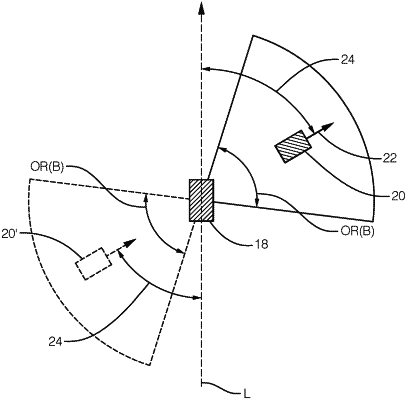| CPC G01S 13/931 (2013.01) [G05D 1/0257 (2013.01); G01S 2013/93185 (2020.01); G05D 2201/0213 (2013.01)] | 21 Claims |

|
1. A computer-implemented method for identifying hazard objects around a vehicle, the method comprising:
detecting, by at least one sensor, an object in an environment of the vehicle;
determining, by at least one processing unit, an orientation parameter and a speed of the object based on data from the at least one sensor, the orientation parameter representing an angular difference between an orientation of the object and an orientation of the vehicle;
determining whether the orientation parameter fits within a predefined orientation range of angular differences between the orientation of the object and the orientation of the vehicle, wherein the orientation range extends in front of and behind the vehicle;
determining, with the at least one processing unit, whether a velocity of the vehicle is within a predetermined velocity range between 0 and a predetermined upper velocity value;
determining whether a speed of the vehicle is less than a sum of the speed of the object plus a predetermined constant, wherein the predetermined constant being within a range from 10 km/hr to 30 km/hr;
determining, on the basis that the orientation parameter fits within the predefined orientation range, the velocity of the vehicle is within the predetermined velocity range and the speed of the vehicle is less than the sum of the speed of the object plus the predetermined constant, whether the object satisfies at least one hazard condition;
identifying the object as a hazard object if the at least one hazard condition is satisfied; and
activating at least one automated function in response to identifying the object as a hazard.
|